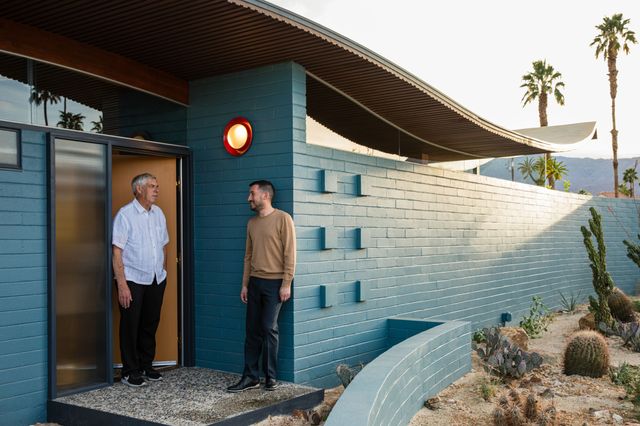The Rebirth of Re:hof Rutenberg
- Category
- Spotlight
- Written by
- Roshan McArthur
- Published
- September 27, 2016
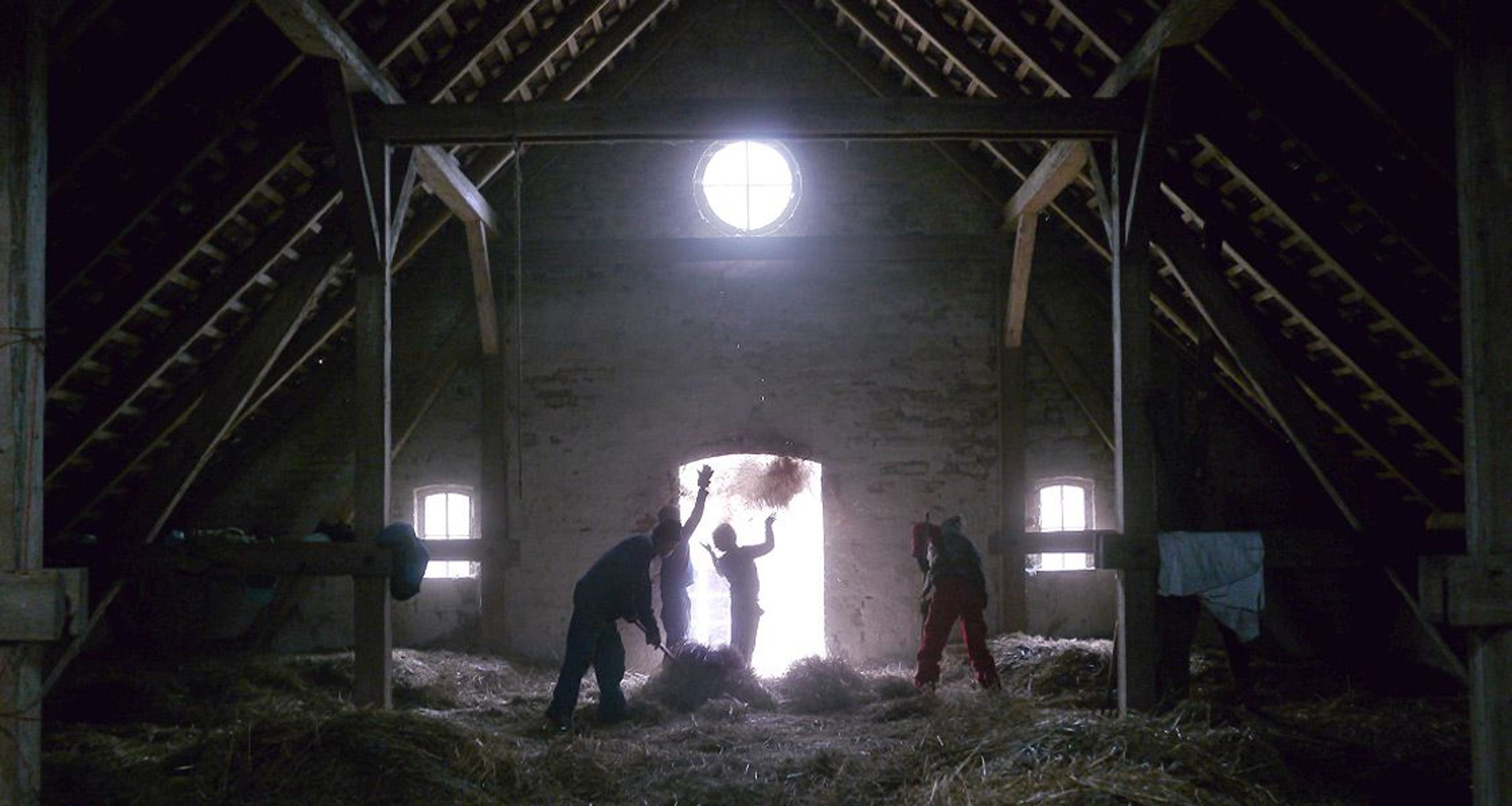
Sometimes you just have to follow your dreams… and figure out the details later.
We really get that. Our own properties, and many of those in our collection, were created from wild ideas. You fall in love with a space, play around with designs, and bring something unexpected to life. And the unexpected isn’t always easy to plan.
Re:hof Rutenberg, a vacation home rental created from a dilapidated old vicarage in Germany, was born from a wild idea. Martin Hansen and Marieken Verheyen, two artists from Amsterdam, had a dream: to create the kind of holiday destination which they had always looked for (but rarely found), using skills honed from years of experience in the Dutch art world.
After 30 years in the city, Martin – a film-maker, editor, lighting designer and commercial artist – and Marieken – a visual artist with a focus on public art – both needed a change. Martin craved peace and a healthy balance between intellectual and manual work, while Marieken wanted to be in nature.
In 2012, they came across two hectares of land in the Uckermark with a barn, stable buildings and a beautiful old garden dating back to 1870. “The buildings had been neglected for a long time,” they remember. “The roof of the barn threatened to collapse, the garden was totally overgrown, and water and electricity connections were either cut off or had to be totally renewed.
“Most of our friends thought we were mad, but we were in love and couldn’t help but see a beautiful holiday resort behind the ruined buildings and wild weeds.”
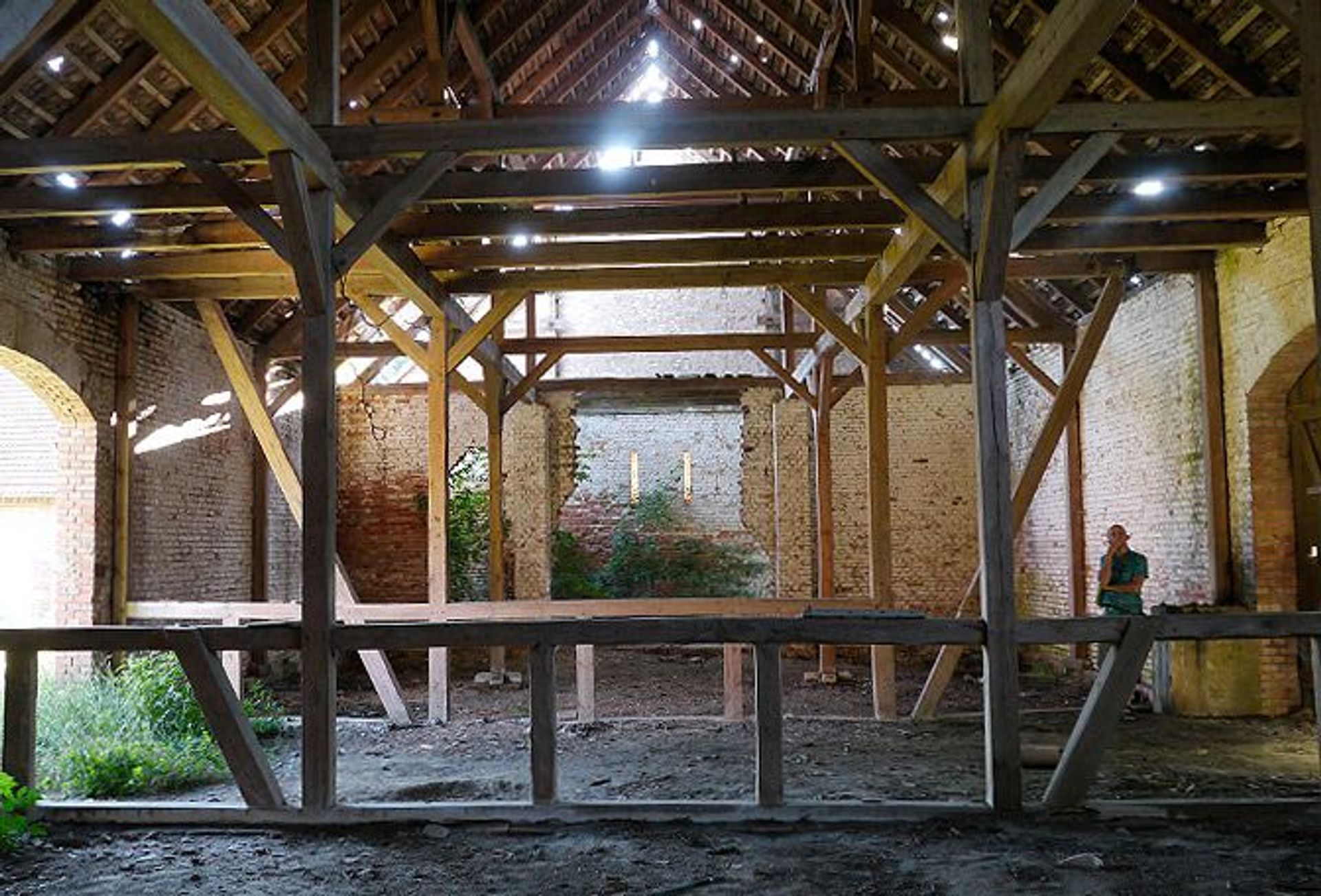
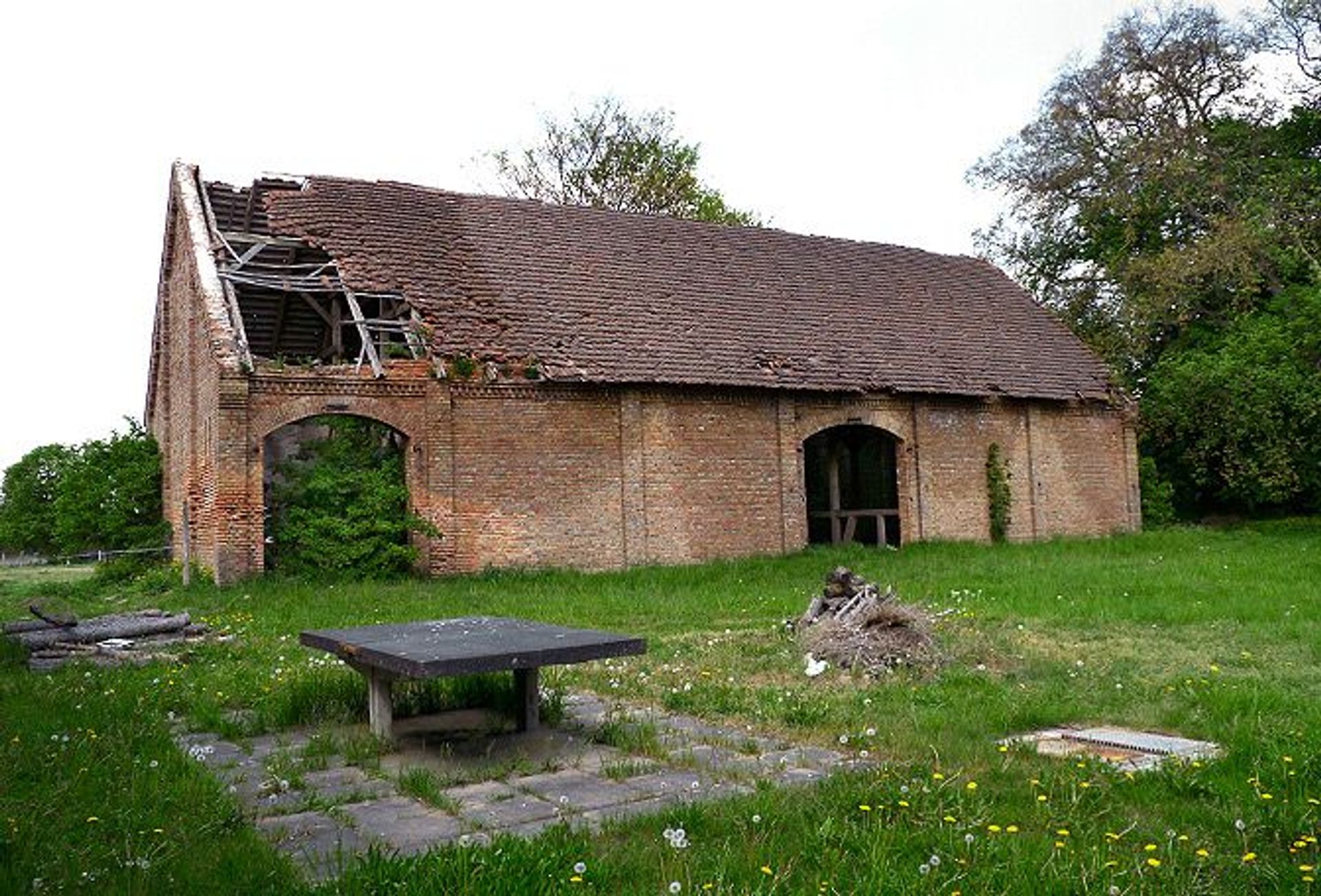
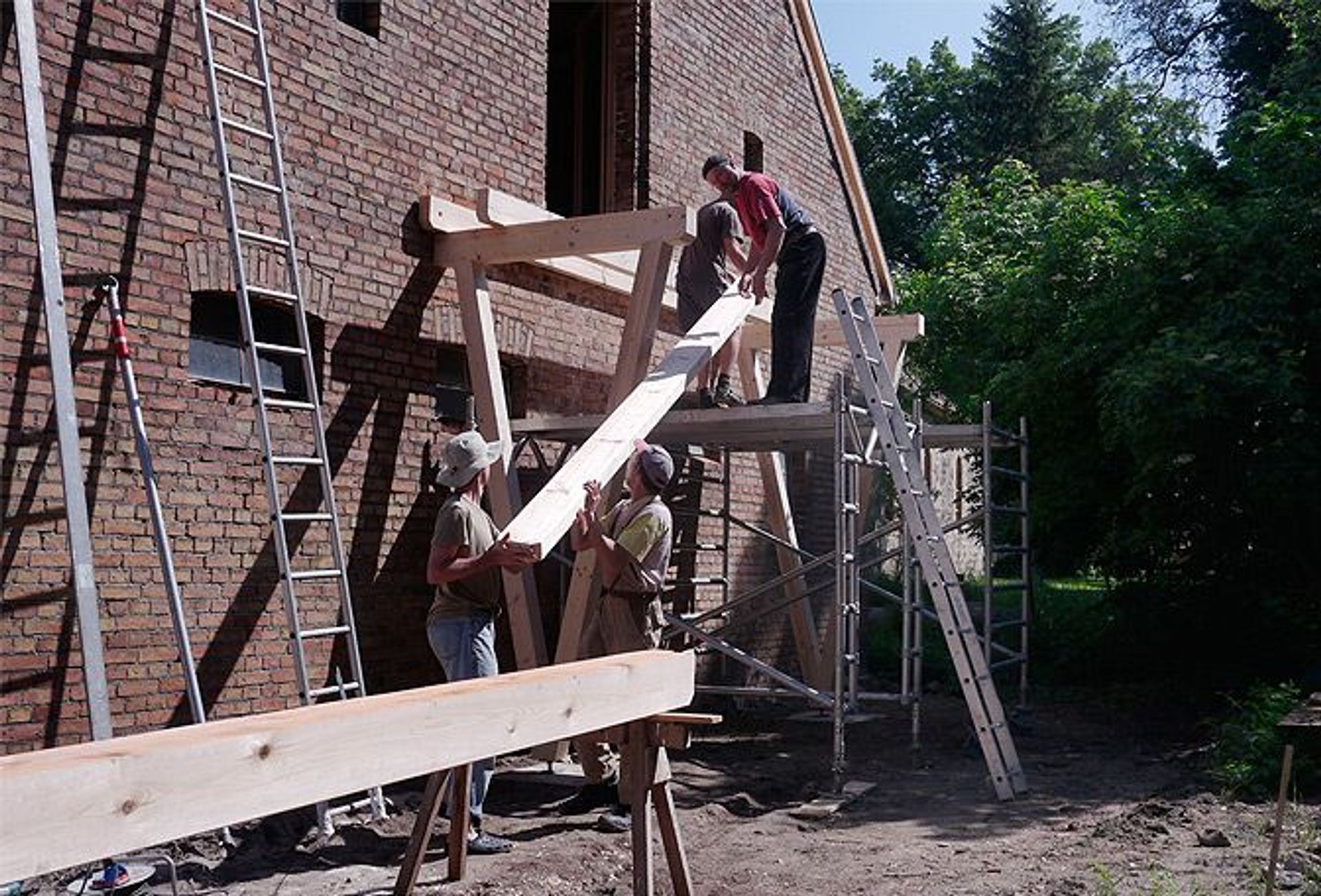
They turned their lives upside down and took on the seemingly impossible. Recognizing they couldn’t do it alone, they recruited Peter Grundmann, an unconventional architect who was willing to meet the challenge they set him – to carry out a major conversion with as little money as possible.
“He is an advocate of improvised construction,” they say, “without too much detailed planning: first construct a section, then find fresh solutions for what emerges. This chimed with our way of thinking and working as artists. A fruitful, process-orientated collaboration developed, in which respect for the old emerged alongside a modern sense of space within the buildings.”
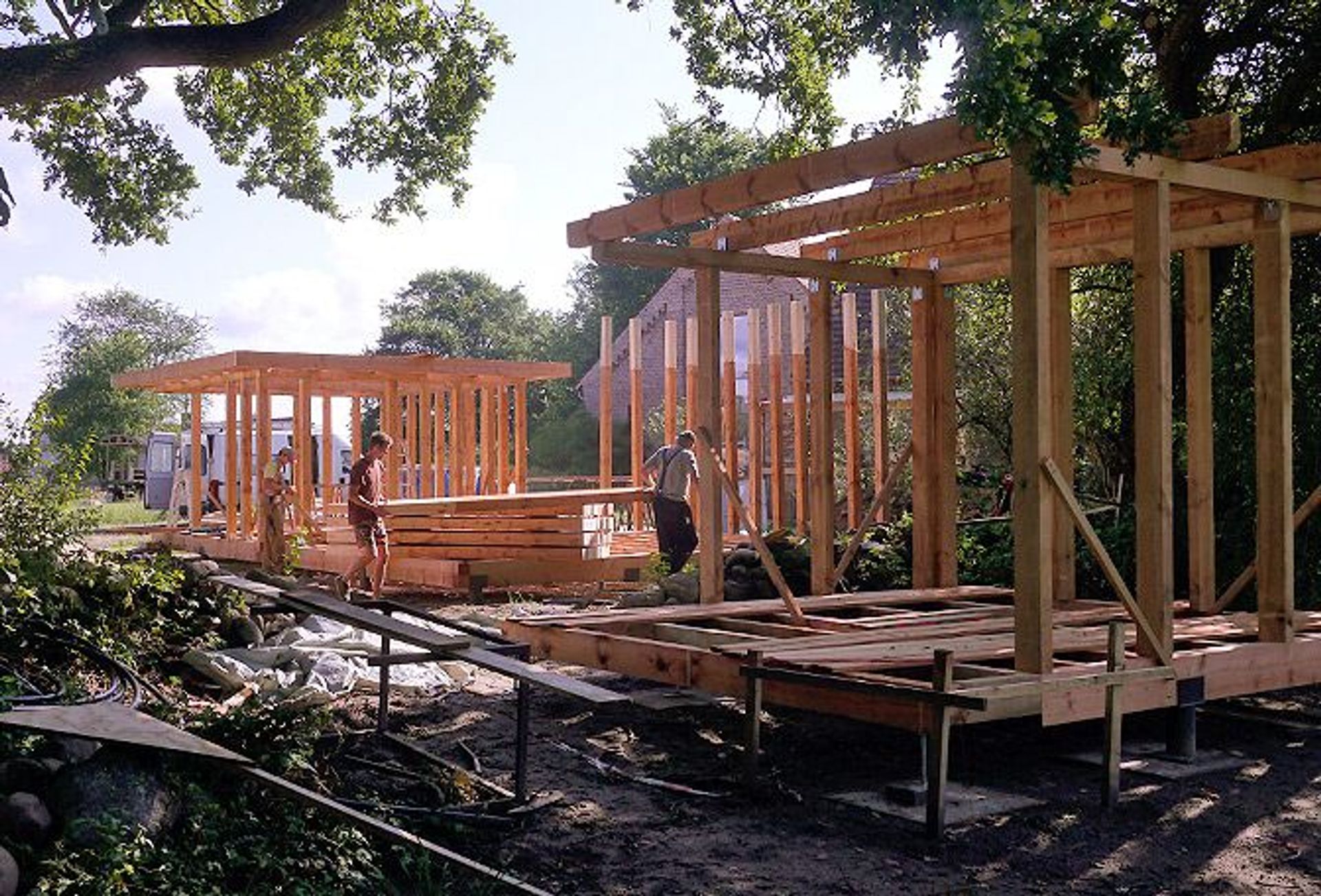

Renovating the property was a challenge, not least because of the complicated planning permission that was required. “Since our garden lies at the edge of the property and borders a national park,” they explain, “we were obliged to seek planning permission to construct holiday homes there. After one and a half years… we slayed this bureaucratic monster.”
The reconstruction took three years. “When we first saw the farmyard, trees were growing inside the barn since the roof had half collapsed. The building had to be torn down. Now, the barn is the heart of the Re:hof. It is a monumental space with large windows, reminiscent of a church nave.”
The rest of the property is a combination of their designs and Grundmann’s. The hayloft of the old stables has been converted into three characterful apartments, with high ceilings, multiple windows and clay-plastered walls.
“We wanted to create hang-out places with good views,” say Martin and Marieken. “The summer houses are designed in relation to the surrounding nature, with fluent boundaries between inside and outside, and a good balance between open space and privacy.”
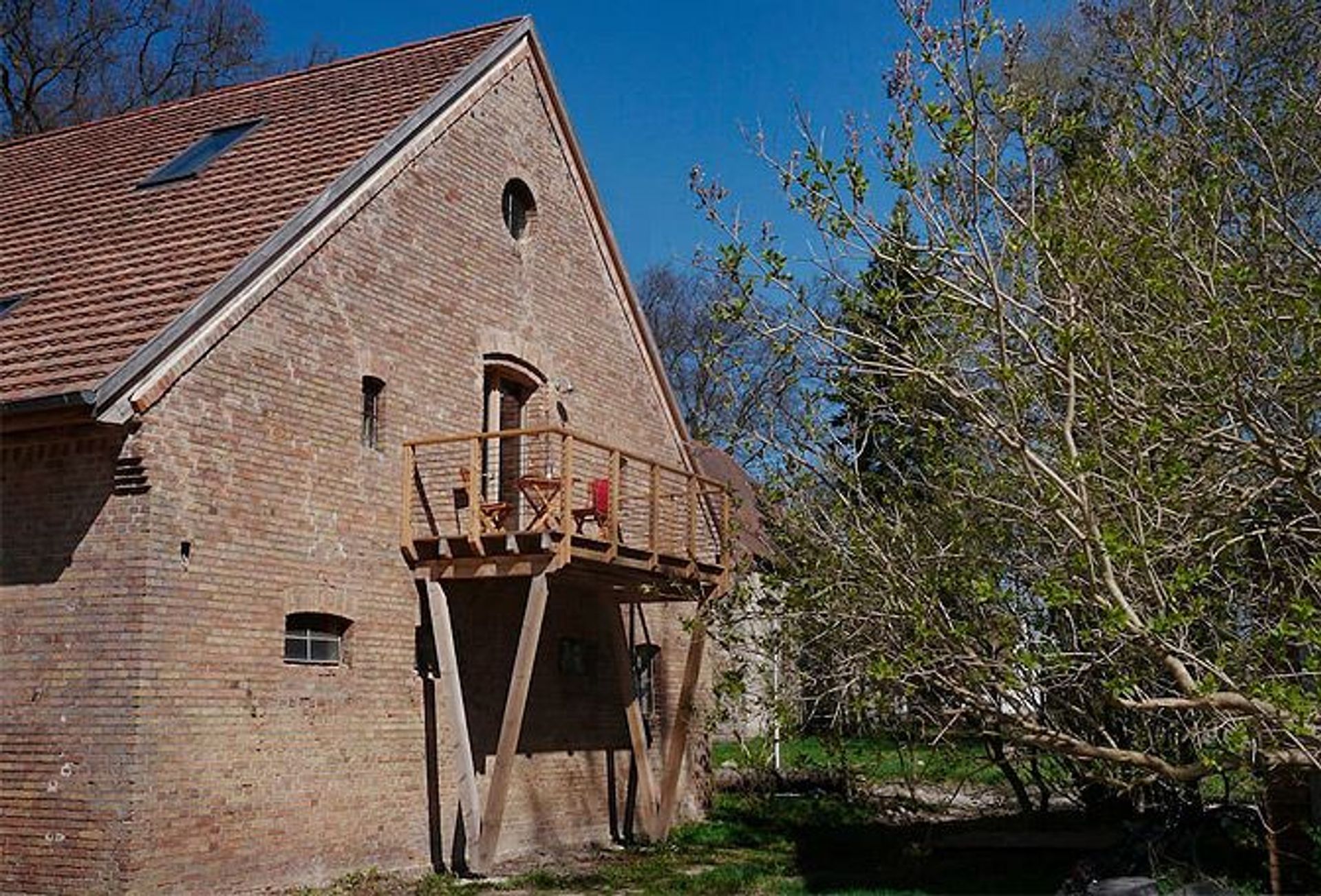
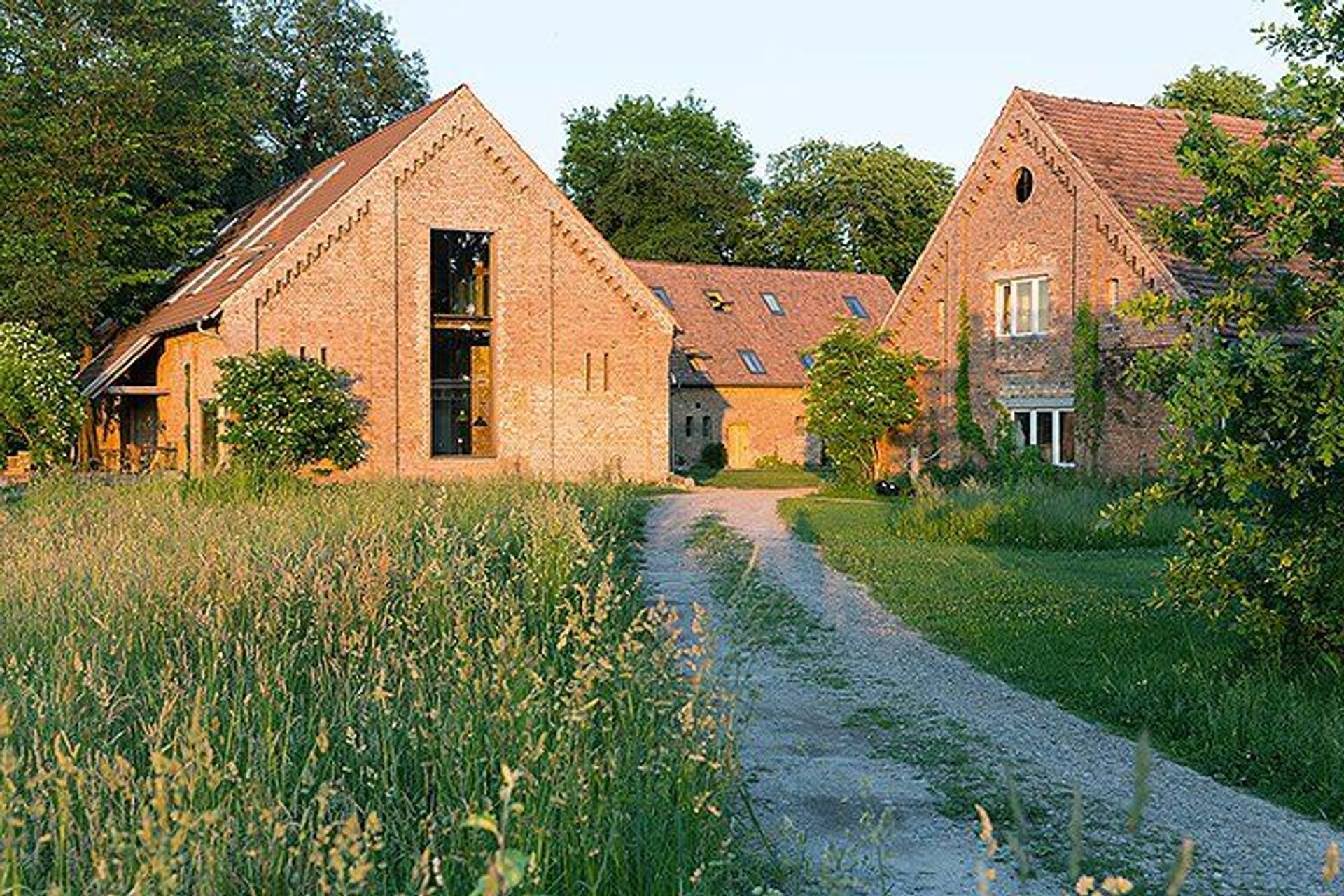
The houses’ names refer to the specific plants around them – Salix to willows, Lupulus to hops, and Spinosa to blackthorn. Lupulus is located between two oak trees, one of which is visible at the right-hand corner of its panorama window, and the other through a special narrow vertical window. It’s also located very close to the original stone wall which surrounds the whole garden, “to give the impression that the stones are part of the room.”
The shower in Salix is a glass box on the exterior of the cabin, surrounded in cherry trees. Spinosa has a Y-shaped form, with no windows on the outside. Two large sliding doors open the interior of the house up – allowing guests to sleep “almost outside”.
For Martin and Marieken, environmental-consciousness is key to their designs. They throw next to nothing away and always try to make something new from waste material. The summer houses were constructed using sustainable materials like clay and wood – and without the use of big construction machines. They use solar panels for shower water and have dry toilets. Waste water is cleaned on the property using a plant filtration system – a process for which they are among the pioneers in Germany. The long-term goal is energy independence.

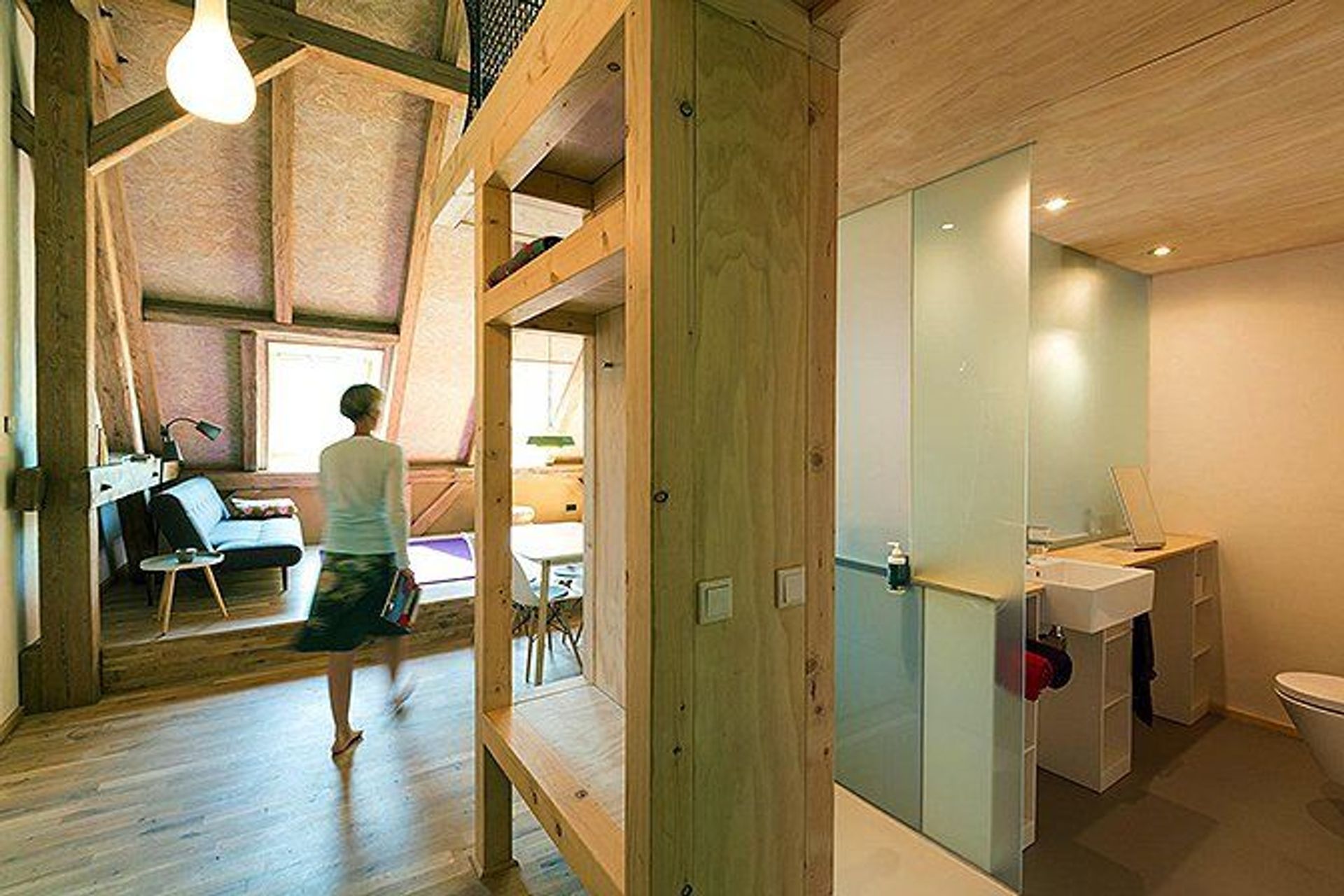
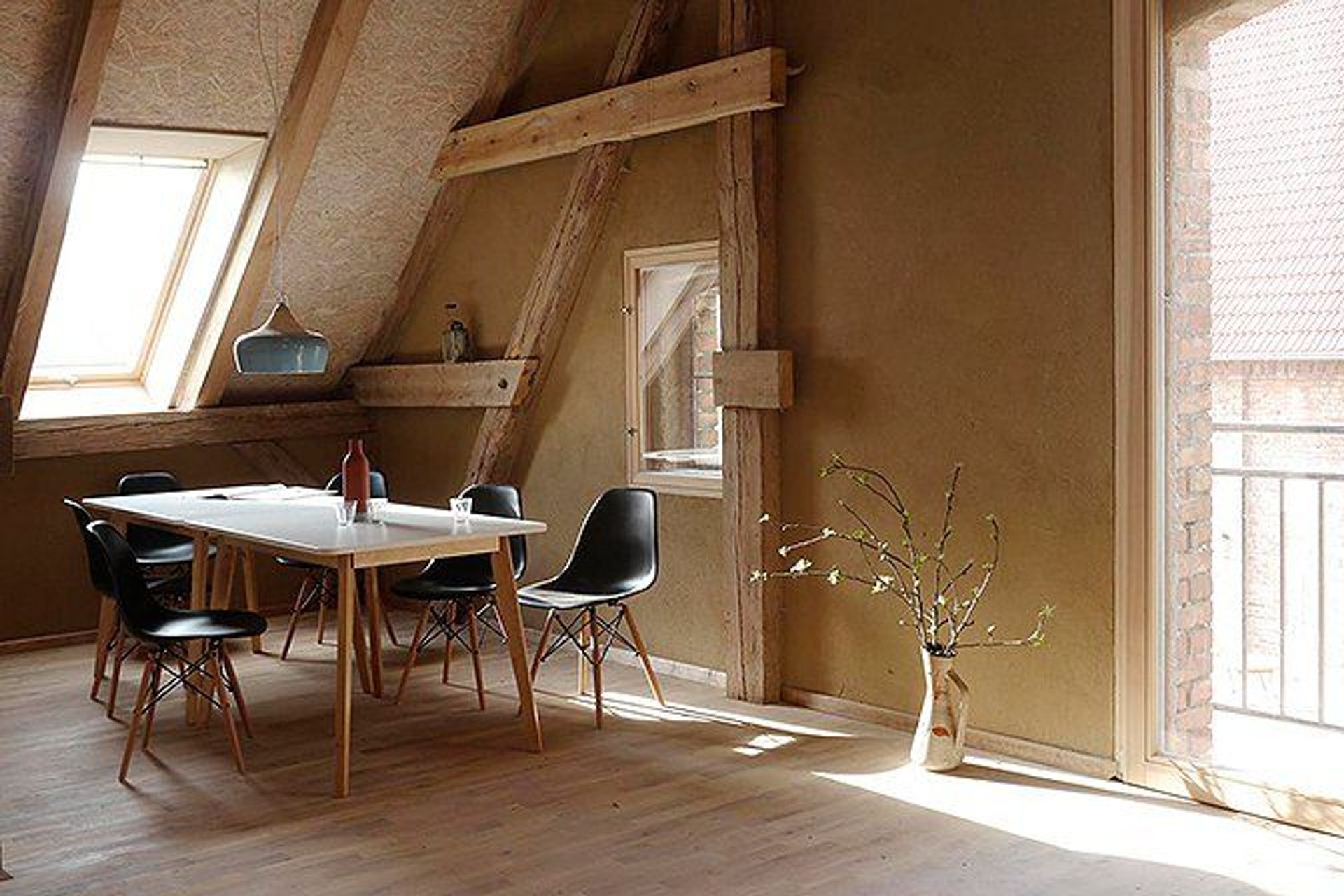
This pioneering spirit is also reflected in the couple’s on-site farm shop. “Most people come from the big cities and have no connection any more with the food they eat,” they explain. “It is cleaned and selected, there is no earth on it, and it looks all the same. In our area the possibilities for buying healthy and biological food are sparse. We want to offer our guests good food, so we produce our own jams, syrups, juices, soups and vegetables.”
They are developing a large vegetable garden, where guests can harvest their vegetables and herbs, and they have an orchard with many different kinds of apples that you can’t find in shops. “They are all different, have occasional wormholes and taste delicious,” they laugh. “At Re:hof, people and especially kids can re:discover and re:connect with how vegetables grow.”
At BoutiqueHomes, we talk a lot about simple luxury. Martin and Marieken really resonate with this concept and for them it means “our guests can discover that space, idle time, silence and contact with nature are more important than the reputed comfort and constant stimuli of high-tech devices. A holiday, besides being relaxing, is a good moment to think about life: how do I want to live? The syllable ‘re:’ in our name expresses this thought. It stands for re:thinking normality.”
The end result, Re:hof Rutenberg, is a truly unique collection of holiday homes that draw upon the creativity and design sensibilities of their artist owners. A dream-come-true for Martin and Marieken – and a great find for us.
To stay at Re:hof Rutenberg click here.
